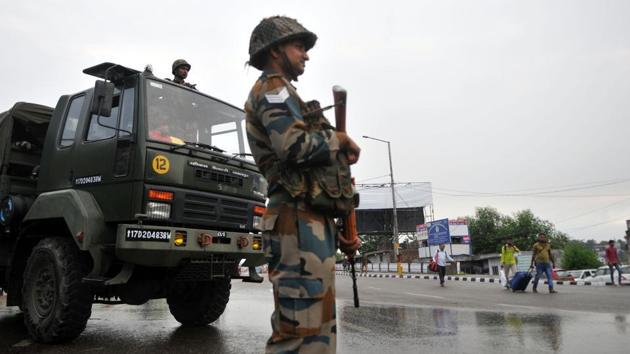41 ordnance units may be turned into public enterprises
The official noted that in the past, the Comptroller Auditor General (CAG), the government’s auditor, and the armed forces, repeatedly raised issue of quality and delays in delivery of equipment by the ordnance factories.
The Union government intends to turn all 41 ordnance factories that supply arms and ammunition and other equipment exclusively to the Indian armed forces into public sector entities to introduce greater professionalism in their management, tap resources from the market, and increase the export potential of defence equipment, according to a senior government official who asked not to be named.

Unhappy with the move, about 80,000 workers of at the factories, overseen by the Ordnance Factory Board (OFB) have threatened to strike work from August 20, said a senior functionary of the All India Defence Employees Federation (AIDEF), a trade union that organises civilian workers in factories and other establishments under the defence ministry.
The factories will “operate like companies,” in which efficiency, quality and market forces will play a role, a second senior defence ministry official, who did not want to be named, said.
The official noted that in the past, the Comptroller Auditor General (CAG), the government’s auditor, and the armed forces, repeatedly raised issue of quality and delays in delivery of equipment by the ordnance factories.
The first ordnance factory was set up in 1784 — predating even the Indian Railways — and OFB is perhaps the oldest government-run entity in India.
The Gun and Shell factory at Cossipore, Kolkata, was set up in 1801 and British colonial rulers went on to build several more. Independent India added several more of the factories.
Ordnance factories supply equipment ranging from tanks and armoured vehicles to guns and even socks to the Indian military. But the majority of its orders come from the Indian Army. In an attempt to increase the efficiency of the ordnance factories, the government classified 275 items manufactured by the plants as “non-crore” items and allowed the military to procure them from the open market.
It is, however, still not clear whether all 41 factories will be merged into a single entity for corporatisation or will be corporatised separately to form different defence public sector undertakings. A committee of experts headed by lieutenant general DB Shekatkar had in the past recommended phased corporatisation of OFB.
The committee identified 14 ordnance plants, including the Jabalpur vehicle factory and the Kanpur ordnance factory, that could be “opened up,” General Shekatkar said.
The committee also advised that a decision on ordnance factories producing strategic components, for instance casing for missiles, should be based on the experience of the corporatisation of other factories. Importantly, the committee also suggested a strategic tie-up between the private sector and OFB, for improving efficiency and the quality of products.
“Why do we need to import vehicles, for instance the Tatra Trucks. The OFB and private sector should come together to produce these in India and export as well,” General Shekatkar said.
In a 2018 report, the CAG observed that for financial year “2016-17, the cost of production at these factories was “R20,037 crore which showed a 10 per cent increase over the last year….but Overhead (Indirect Cost) contributed 31 per cent of the Cost of Production.”
In addition, CAG observed that in the same financial year “OFB supplied materials of “R20,876 crore (12% increase from the last year) to its different indentor” – mainly the Indian Army that accounted for 80% of the orders. OFB, however, could supply less than 43% of the orders. “Corporatisation of the OFB will bring them at par with the defence public sector undertakings. They will continue to be owned by the government. This is [in the] interest of OFB as it will provide operational freedom and flexibility to the OFB which it lacks. The interest of workers will be adequately safeguarded,”a spokesperson for the defence ministry said, explaining the move.
In response, MK Ravindran Pillai, vice president of AIDEF, said “private participation in defence manufacturing in fine, but how can OFB be removed from manufacturing critical items like weapons. Our objection is driven by national security and safety of the soldiers.” He added that the workers were going on a month-long strike from Tuesday to oppose the move.
An August 16 meeting with the ministry of defence ended in a deadlock, he said.
“Corporatisation will give more autonomy to the OFB, they need not seek government approval for every move. But, a lot will depend on the model of corporatisation that the government adopts. We must also remember the private sector still has some way to go in manufacturing defence platforms,” lieutenant general Subrota Saha, a former deputy chief of army staff, said.






